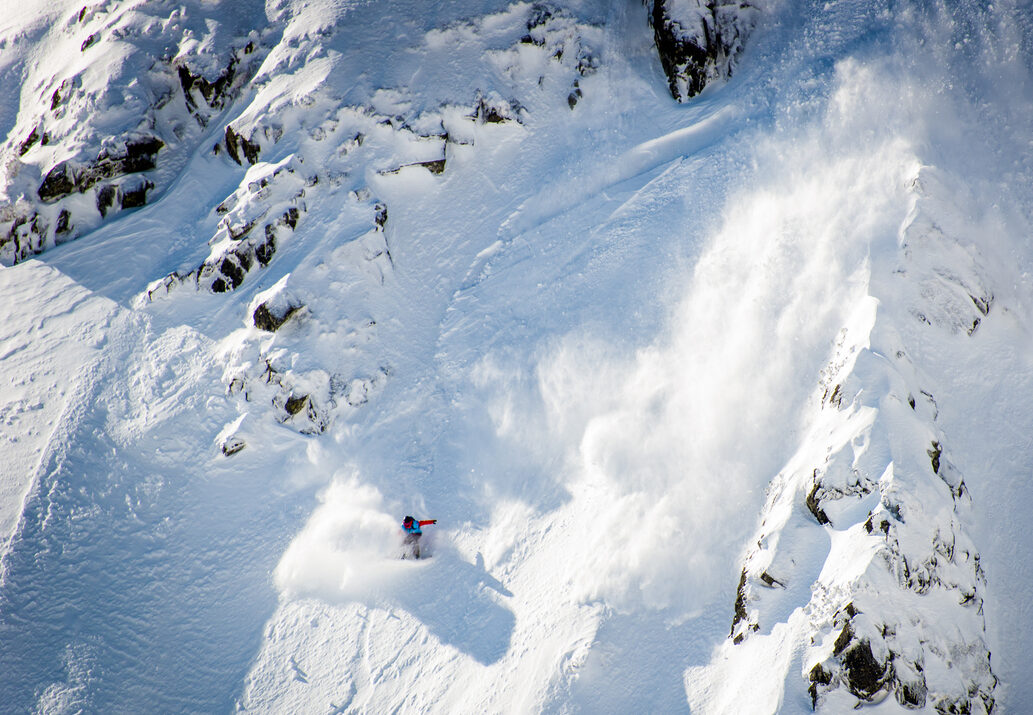

As FreeRiders, we have to get comfortable with the idea that when we go beyond the piste markers we must also take responsibility for our own safety. Our quest for fresh tracks requires that we learn not only how to manage risk but also how to deal with uncertainty. Heuristic traps are a major factor in avalanche accidents, as people may underestimate risks or make decisions based on past experiences or assumptions.
When dropping into that fresh line there are no absolute guarantees that it won’t slide or that you won’t fall. It’s one of the reasons why renowned avalanche safety expert Bruce Tremper obsesses about consequences. If you’ve laid the groundwork – read the avalanche bulletin, checked the weather, conducted a risk assessment, made a plan, applied safe travel techniques and have your TSP – then there’s a good chance you’ll be celebrating another successful descent. But we all make mistakes, and research suggests that we tend to make the same mistakes for the same reasons. These are the Heuristic Traps.
Heuristics are rules we use to simplify decision making when faced with complex problems and incomplete information
To understand Heuristic Traps we first need to understand heuristics. In human psychology, heuristics are rules we use to simplify decision making when faced with complex problems and incomplete information. In other words, exactly the kind of situations we frequently find in FreeRide terrain.
These rules work well in most circumstances but can sometimes lead to systemic errors, otherwise known as Heuristic Traps. In 2004, avalanche researcher Ian McCammon studied the decision making of avalanche victims. Using the mnemonic ‘facets’, he identified a set of consistent human factors that can lead to an avalanche.

F: Familiarity. I’ve skied this slope many times before and it hasn’t avalanched so it’s probably okay today. If we understand avalanche terrain then we know that avalanches tend to be habitual and only occur on terrain with certain features & characteristics. In the excitement of a fresh line, it’s easy to overlook or dismiss those features and characteristics and rely solely on previous personal experience to incorrectly assume a slope is always stable.
A: Acceptance. Being human is complicated, devilishly so, and FreeRiders are no exception. Our motivations to ride a line are many and varied but they can include the social acceptance of people we like or respect. This desire to impress others or to demonstrate our FreeRiding prowess can override an objective analysis of the avalanche risk.
C: Consistency. Backing away from a plan can be incredibly difficult, so much so that we can both consciously and subconsciously misinterpret or even dismiss information to maintain consistency with our plan. This is sometimes referred to as “situating the appreciation” (the opposite of appreciating the situation) whereby, having made a plan, we then misread the objective facts to make the plan seem reasonable. The facts should come first, and the plan should be built around them.
E: Expert Halo. When skiing in a group it is sometimes easier to let others make the decisions or accept a decision that conflicts with your own, especially when the decision maker appears to have more experience or expertise. At the Republic, we think everyone has a voice (that’s why we’re a republic), but we also know it takes real courage to speak up.
T: Tracks. As in First Tracks or Powder Fever. Bluebird powder days don’t happen often and when they do they are cause for celebration. Our desire to ski untracked powder is so strong many throw caution to the wind, and either ignore avalanche warning signs or act on impulse and forget our safe travel techniques.
S: Social Facilitation. Even though we’re a Republic, we recognise that sometimes group think can get the better of us. While it’s true that there’s safety in numbers – especially in FreeRide Terrain – it’s also the case that social pressure can increase individual risk taking.
Download our FACETS infographic and test yourself and your crew before your next bluebird powder day.
Avoiding Heuristic Traps in the moment is harder than you might think
Understanding the concept of Heuristic Traps isn’t complicated and recognising them after the fact is relatively simple, but avoiding them in the moment is much harder than you might think. For example, in a quick straw poll at the Republic we all admitted to having fallen into these traps in the past.
While it helps to have an understanding of heuristics, you don’t need a degree in psychology. You don’t even need to remember the FACETS pneumonic. What you do need, is self-awareness.We think it’s much more important to recognise the human factors in our own behaviour that could result in a heuristic trap and to take action to mitigate them.
Practises to help you avoid heuristic traps:
1. Get comfortable with flexibility. Be prepared to constantly re-evaluate your plan, asking the question “has anything changed?” and adjust if necessary. One way of doing this is to break your plan down into phases (eg: Phase 1: The meeting point. Phase 2: The approach. Phase 3: The ascent. Phase 4: The drop.) and then conduct a group re-evaluation at the end of each phase.
2. Observe the Commandments: 7, 8 and 9 of Bruce Trempers commandments for backcountry travel:
Explore the themes below to find the best home for the content you want to learn about: